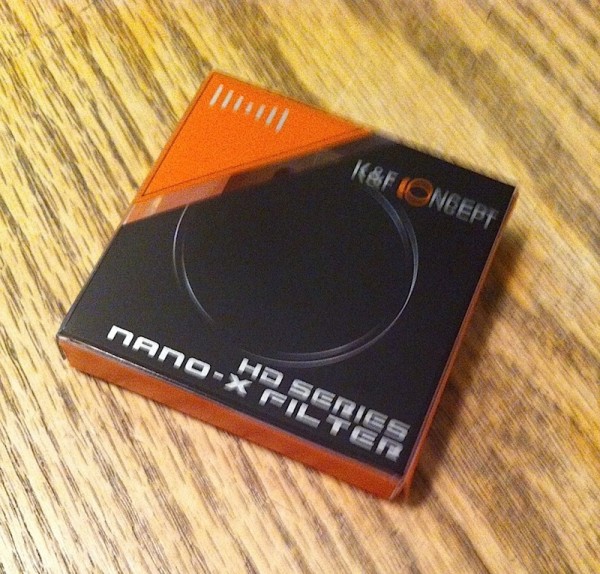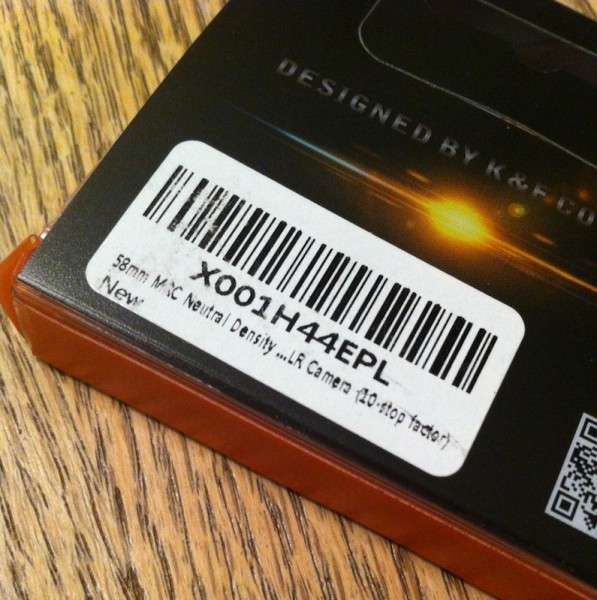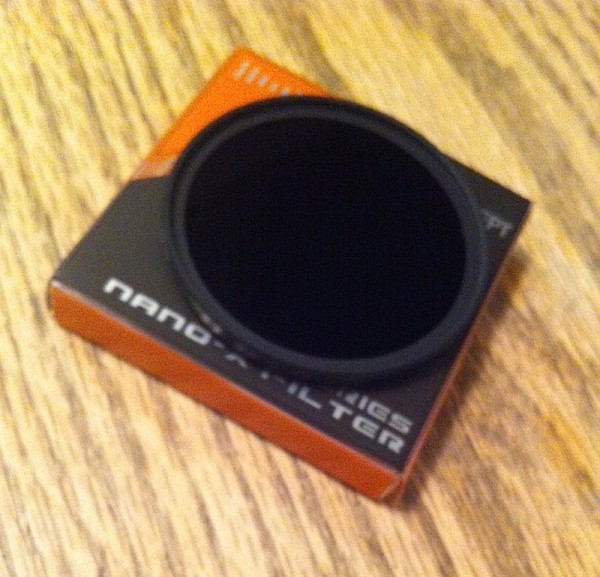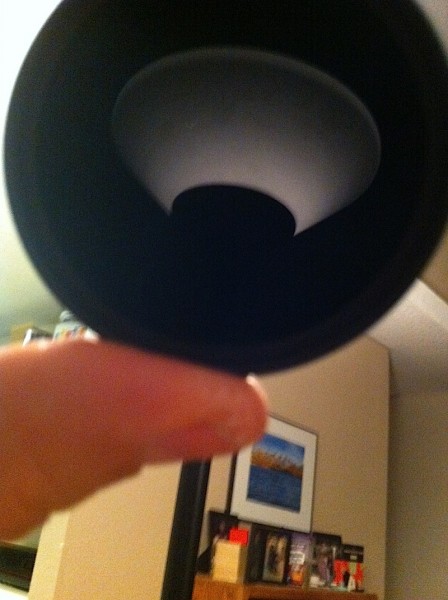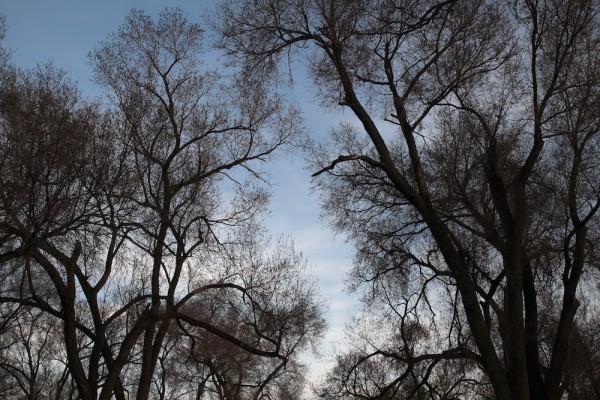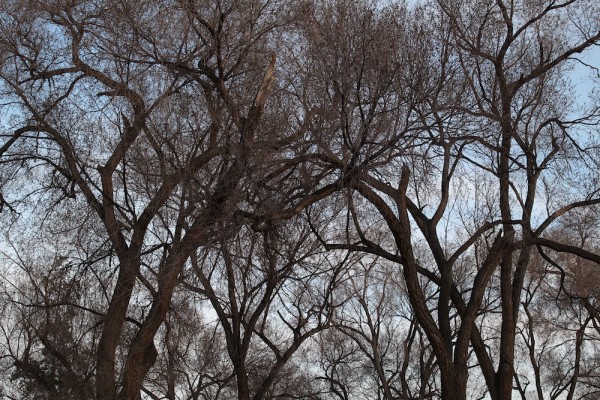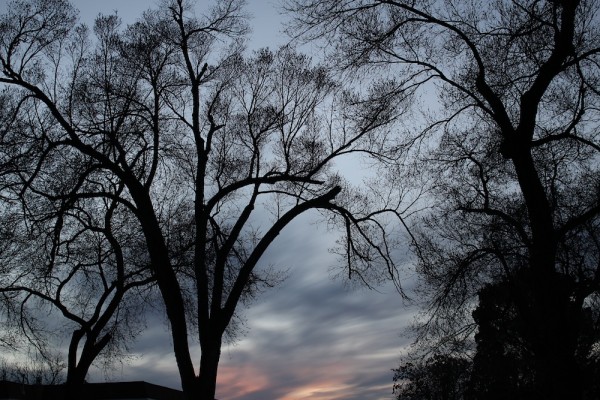Filtered
by Bruce • February 13, 2018 • LifeStuff • 0 Comments
Last night, I recalled I still had a set of neutral density filters in my camera bag I had never used before, and most specifically, and ND-10 filter that I had picked up on sale a month ago at Amazon. I determined I’d go somewhere after work this evening and give the ND-10 filter a try, if only to try out a long exposure technique if I ever discovered a stream, river, or beautiful flow of traffic that I had to photograph.
Lacking any greater creativity, I decided after work to drive over to Roosevelt Park off of Coal and Spruce, a park which is somewhat like a designer kidney-shaped bowl down by the University which is peppered here and there within by some very tall trees.
When I pulled off of a busy Coal onto Spruce and parked by the park, it was empty. I decided to set up a tripod near the corner of Coal and Spruce, but away from the street, a little on the incline that welcomed you into the bowl. I figured I could just photograph treetops, and maybe some cloud movement.
I didn’t expect to create anything amazing in this exercise. It was really more of a chance for me to, again, learn more about the camera, and about how to take pictures.
Neutral Density lenses were created to give photographers a way to collect longer exposures in situations where there is plenty of light, and still be able to collect some meaningful, detailed images without the image being washed out by having a shutter open for a long time. There are a few ways filters are described or defined, but in basic terms, these filters are often identified by the number of stops, or exposure values (an amount of light let into the camera by the aperture setting), they mask, which the photographer compensates for when setting the speed of the shutter for a photo. Most cameras have a fairly set range of f/stops, and each f/stop is a doubling or halving of the amount of light let into the camera by its neighbors. Because these filters mute the light let into the camera by a number of stops, the camera can compensate for the thinner light admittance by keeping the shutter open longer, which permits the camera to do some nifty image effects- like smoothing the spatter and pulses of flowing water into interesting cloudy structures of motion. Standard camera shutter speeds range from about 1/1000 of a second to 1 sec, each setting a doubling of its neighbor (1/1000, 1/500, 1/250, 1/125, etc… 1/4, 1/2, 1 sec).
In my exercise today, I thought it good to go ahead and just use the ND-10 filter to practice long exposure technique, which involves 1) setting the camera up on a fixed location and collecting the exposure settings for your desired photo offered by the instrument in Automatic mode (1/100 shutter speed, f/5.6 aperture, 100 ISO) and making sure it is locked down and focused, 2) calculating the necessary shutter speed for an equivalent exposure when the lens is covered by a filter of ‘X’ stops- which, in this case, was 10, 3) attaching the filter or filters to the camera lens, and 4) setting the camera shutter speed to the appropriate setting for this filtered image.
I found a chart that offered updated shutter speed settings calculated for each basic shutter speed in a camera. In this case, wanting a photo that desired a shutter opened for 1/100 a second in normal circumstances, my table told me that 10 stops up from a 1/100 second exposure would be an 8 second exposure. I set the camera in Manual mode to have a shutter speed of 8 seconds, and with the filter on, I took a few photos of several different treetops, a few during the time when the sun was setting.
I moved the camera a few times and took some photos at each spot, and it was the first time I used my remote to trigger the photos. I couldn’t figure out how to use some of the remote’s more complicated options, but just using it to take pictures without touching the camera was part of the practice of taking a long exposure with a camera in a fixed position.
Again, my results were not amazingly dramatic photos, but the exposure results were in the ballpark of offering an image somewhat like what I was seeing, so I left the park at sundown with some confidence that I was approaching the technique correctly.
Now I just have to make sure I don’t forget how to do this stuff, and find a better live opportunity to use it somewhere local- on a fountain, or a stream, or a trafficked corridor, or on a mountain under fast moving clouds.
I am pretty sure treetops at sundown are probably not the right object to practice long exposure photography on (can we say outgoing tide at sunset?), but at least the images created looked like the moments of daytime they were supposed to without any tweaking. And I am learning a little bit more about photography in exercises like this. And I’m looking forward to trying this exercise again in a more meaningful situation soon.

